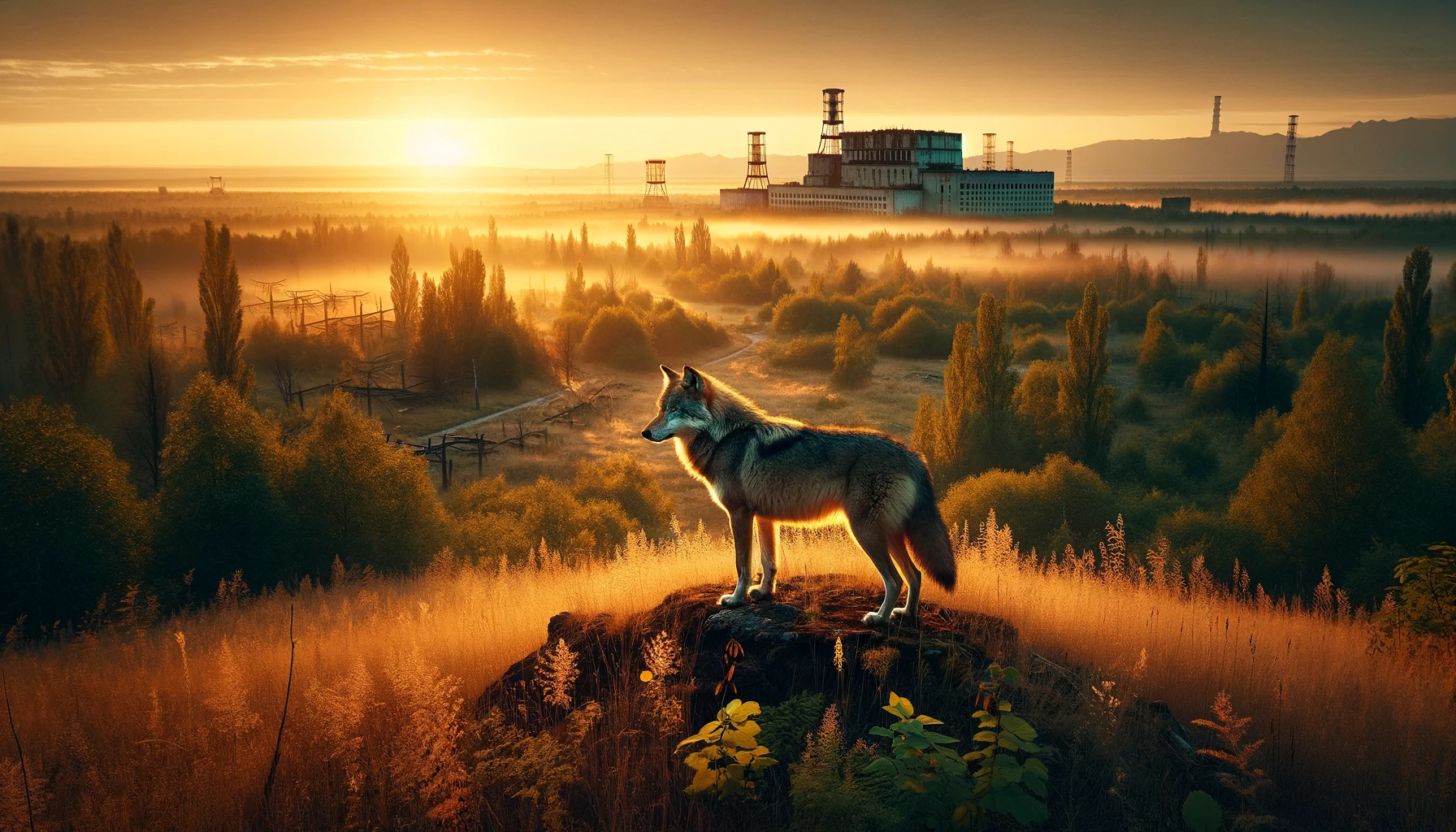
Chernobyl was one of the scariest disasters in human history. But within the radioactive ghostly expanse of the Chernobyl Exclusion Zone, nature has provided a surprising turn of events. In the past three decades since the catastrophic nuclear disaster, the abandoned landscapes have transformed into a remarkable wildlife refuge. With the humans gone, nature is healing — despite the remnant radioactivity.
In fact, as a new study shows, nature is exhibiting remarkable adaptations that could even help humans.
Mutant wolves
The Chernobyl disaster occurred on April 26, 1986, in the then-Soviet Union. It stands as one of the most catastrophic nuclear accidents in history. The explosion and fire at the Chernobyl Nuclear Power Plant released massive amounts of radioactive material into the atmosphere, spreading contamination over wide areas of Europe. The aftermath saw the evacuation of thousands from their homes in the surrounding areas, including the now-abandoned city of Pripyat. It leaves behind a haunting legacy of human displacement and suffering.
But ironically, decades later, the site and its surroundings have become a focus of scientific research and ecological recovery, offering insights into the resilience of nature and the long-term effects of radioactive contamination.
Previous studies have shown that despite the radiation, Chernobyl has become a hotspot for biodiversity. From fungus to frogs and mammals, life has found a way. Now, life is more than finding a way — it’s adapting to the new challenges.

Dr. Cara Love, an evolutionary biologist and ecotoxicologist at Princeton University in the US, has been studying Chernobyl’s wolves for a decade. She and her colleagues visited the exclusion zone in 2014 and placed radio collars on the wolves, tracking their movements. This not only gave the researchers an idea of the wolves’ movements — but by tracking their travels alongside radiation sensors, they could also see how much radiation the wolves were exposed to.
In addition, the researchers took blood samples to see how the wolves respond to the levels of radiation.
Overall, the researchers found that the wolves are exposed to up to 11.28 millirem of radiation every day. That’s like taking a chest X-ray every day — over 6 times the normal safe limit for humans. But what was more intriguing was how the wolves responded to radiation.
Wolf therapy
Love found that the immune systems of the wolves had adapted to change. In fact, researchers found some of the markers exhibited by cancer patients undergoing radiation treatment — suggesting that the wolves’ immune systems are taking steps to fight the radiation.
There was another striking adaptation. Some parts of the wolves’ genetic information seemed to be remarkably resilient to cancer.
In humans, researchers often look for mutations that increase cancer risk. For instance, some alterations of the BRCA1 and BRCA2 genes have been linked to an increased risk of cancer for both men and women. Although just around 1 in 400 people have this mutation, doctors need to keep an eye on it.
But Love’s work is more about looking for mutations that protect against cancer — and this is what seems to be happening with the wolves in Chernobyl.
Previous research has shown that radiation exposure can speed up genetic mutations and that some of these mutations make organisms more resistant to radiation itself. Usually, this is demonstrated in plants and simpler animals, not so much in mammals.
The signs are exciting but it’s hard to continue the research. First, the pandemic, and then Russia’s invasion of Ukraine, have made it virtually impossible for researchers to continue their work and travel to the exclusion zone.
“Our priority is for people and collaborators there to be as safe as possible.”
Hopefully, this situation will be improved soon. By unraveling the genetic mechanisms that afford Chernobyl’s wolves their resilience, scientists may uncover new strategies to enhance human resistance to radiation-induced cancers, improve the efficacy of radiation therapy, and even develop novel cancer prevention techniques.
The study was presented at the Society for Integrative and Comparative Biology’s annual meeting in Seattle and has not yet been published in a peer-reviewed journal.
This story originally appeared in February 2024 and was updated with new information.









